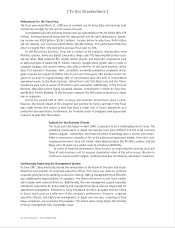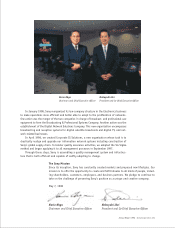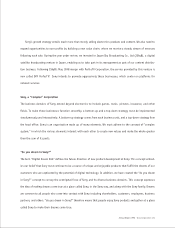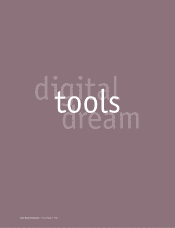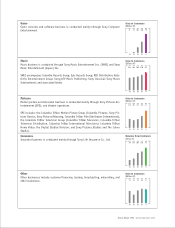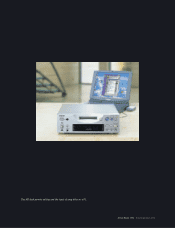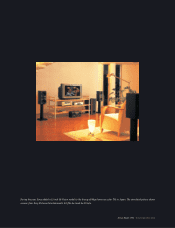Sony 1998 Annual Report Download - page 15
Download and view the complete annual report
Please find page 15 of the 1998 Sony annual report below. You can navigate through the pages in the report by either clicking on the pages listed below, or by using the keyword search tool below to find specific information within the annual report.
Annual Report 1998 Sony Corporation [13]
[ Feature Section—digital dream ]
for making digital dreams come true The easy enjoyment of tools and content, both created from dreams, requires
innovative linkage technology. This is why Sony is hard at work on developing interface and software technologies.
The goal is to let users operate products with much more freedom by connecting hardware to networks. ✦ Sony is
aggressively promoting the IEEE 1394 standard, which is currently being proposed by Sony under the name i.Link, for
interactive communications between digital audiovisual equipment and PCs. Sony was among the first to incorporate
a digital interface conforming to this standard in its products. The Digital Handycam camcorders and VAIO home-use
PCs are two examples. In May 1998, Sony, along with seven major Japanese and European electronics companies,
formulated the core specifications of HAVi (Home Audio Video interoperability) for audiovisual equipment that can
connect to a home network based on IEEE 1394. This specification will offer new benefits to customers allowing
interactive connection and operation between digital audiovisual equipment from different manufacturers. ✦ Sony
alone is developing the Aperios operating system, which meets audiovisual equipment requirements that demand
real-time processing. Sony is studying the loading of appropriate software in audiovisual equipment such as
Windows™ CE, PersonalJava™, and MHEG multimedia international standard script language, which is expected to be
adopted for digital broadcasting. As part of this drive, Sony has announced plans to begin collaboration with Microsoft
Corporation to create a home-networking environment by the convergence of PCs to digital TVs and audiovisual
platforms. Sony intends to license Windows CE for use in certain products. Similarly, Microsoft intends to license
Sony’s Home Networking Modules for use with certain versions of Windows CE. In addition, Sony has entered into a
licensing agreement with Sun Microsystems, Inc. for the development of applications based on Java™ technology for
the home network environment. Under the agreement, Sony incorporates applications based on Java technology into
its advanced digital audiovisual products, and Sun creates PersonalJava software development tools for digital audio-
visual products. ✦ Sony is now putting these technologies to work. This knowledge is expected to lead to a home
network in which customers can access specific video and audio selections whenever they want. The ultimate goal is
making digital dreams come true.



